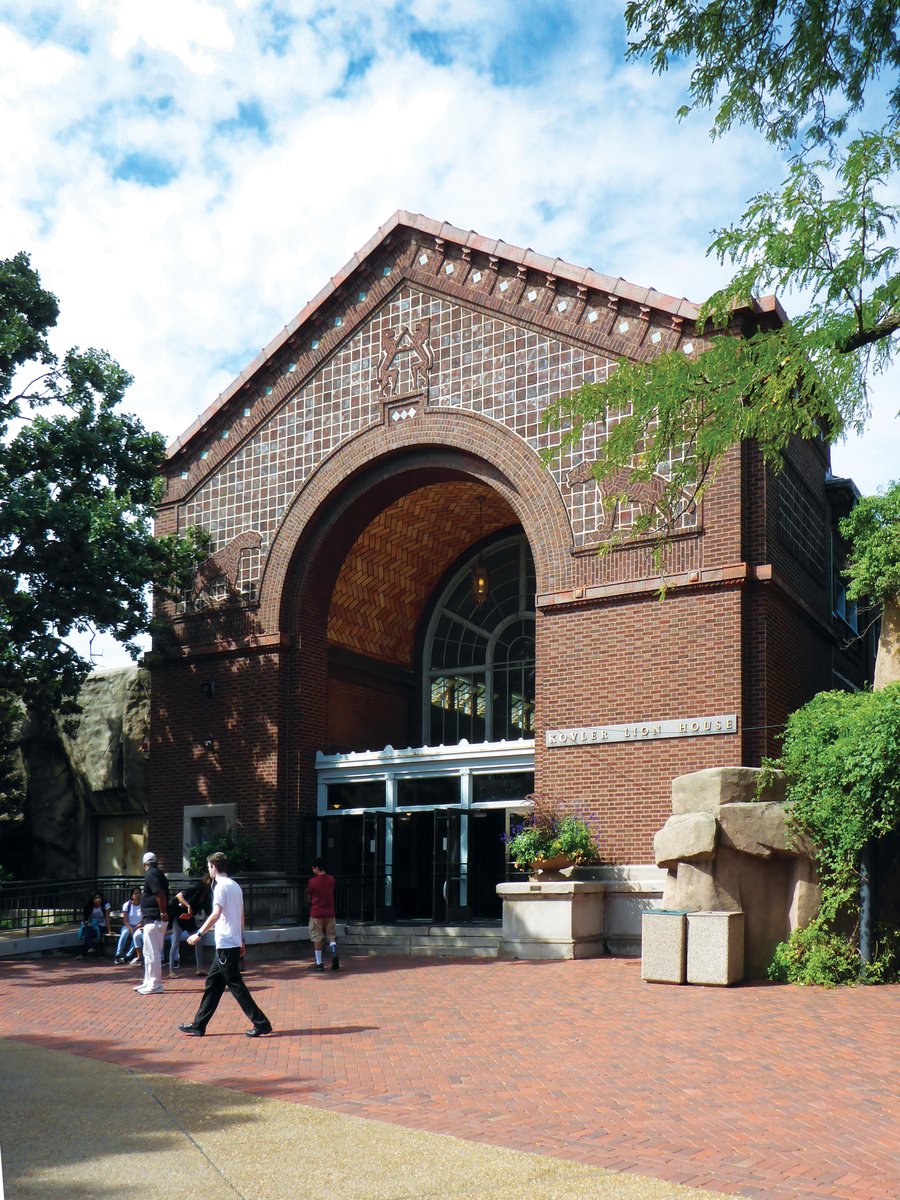Pepper Family Wildlife Center
Chicago, Illinois, USA
Sitting at the heart of Lincoln Park Zoo, the iconic lion house was originally designed by architect Dwight Perkins and completed in 1912. With its decorative brickwork and terra-cotta ornament, lion mosaics and grand hall with a vaulted tile ceiling, it was designated a Chicago Landmark in 2005. With limited work done since the last significant renovation in 1990, the building was due for improvement. As the final phase of a decade-long makeover at the zoo, renovation and modernization plans for the facility include a spacious, state-of-the-art habitat for a pride of lions, as well as potential future offspring.
The new lion habitat will span the full northern side of the building, with the design guided by close observation of lions over the years and with animal welfare as the top priority for exhibit design. Large windows will provide expansive views directly onto the outdoor lion space. The savanna-style habitat will include intricate rockwork to increase vertical complexity and expand environmental options for the lions while providing embedded heating and cooling elements for climate control. Tree structures and deadfall will be made from trees certified by the Forest Stewardship Council, and a food zipline, simulating prey, will be installed for lion feeding as an enrichment opportunity, allowing the big cats to hunt, stalk and chase. The new facility will triple the usable space for the lions and almost double the previous holding area space. The project will also restore the original Arts and Crafts structure, including the masonry, clay tile roof, and copper gutter, along with windows and doors.
Guests will have immersive, “nose-to-nose” viewing opportunities from both inside and outside the building. The unique design will also facilitate viewing from the center of the habitat while allowing lions the opportunity to literally walk, and be viewed, overhead. The learning focus at the building will be the zoo’s ongoing conservation efforts in Africa. The habitat will also be built to include a demonstration and training wall where visitors can view the lions working with zoo staff to participate in their own care.


